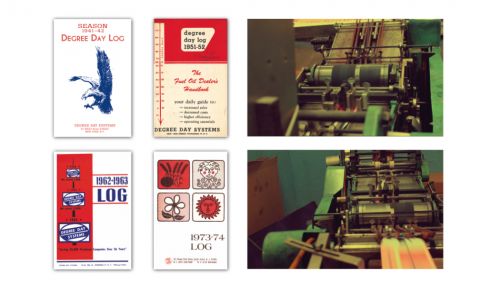All
AI Technology on The Road
by Ed Burke and Kelly Burke, Dennis K. Burke Inc.

New technologies can assist fuel distributors with planning, dispatch, supply, and safety
We’re just about 18 months into the AI boom, and there’s a lot changing around us.
Nvidia, long known for its graphics chips, is now the most valuable public company in the world. Shares of the chipmaker climbed in June, lifting the company’s market cap to $3.34 trillion, surpassing both Microsoft and Apple.
In June, Apple announced the release of a series of new AI tools on iPhones and other personal devices. Such tools, also known as chatbots or generative AI, are designed to interact smoothly with humans and perform high-level writing and other kinds of creative work. Apple said that the AI tools will be supported by technology developed by ChatGPT maker OpenAI.
Which leads to the question, is there any AI being used in the typical workplace? A recent Tech Executive Council report found that about 60 percent of top execs surveyed said their company is using approved AI tools. That’s up about 50 percent from a year ago. We can see this is the beginning of a real new wave of technology.
AI In Roadway Transportation
AI makes fleet management and office operations more automated and efficient. We’re all familiar with the safety features available on new cars. The advanced driver assistance systems use AI algorithms to detect potential hazards, provide real-time alerts to drivers, and, in some cases, take corrective actions to prevent accidents. This enhances the safety of drivers and passengers by mitigating the risk of accidents caused by human error.
One of the most transforming applications of AI in transportation is self-driving cars, although many consumers are still skeptical about what the future of autonomous cars might hold. It’s worth noting that self-driving cars are now on the road in Tokyo, but a driver must be in the vehicle to control the car during an emergency.
AI can play a pivotal role in detecting a vehicle’s underlying issues and act preemptively rather than reactively. AI predictive maintenance uses historical and real-time data to forecast potential problems with vehicles, enabling proactive maintenance to prevent breakdowns and reduce downtime. This predictive approach enhances safety and contributes to cost savings for transportation companies.
Customer service AI chatbots with natural language processing can take over several mundane tasks, answer customer questions, and deliver a more personalized and engaging customer experience.
You can get a lot of information from telematics. Driver behavior analytics utilize telematics equipment equipped with AI algorithms that can monitor and analyze various aspects of driver behavior, including speeding, harsh acceleration or braking, and adherence to traffic rules.
The analytics provides fleet managers with detailed data to help promote safer driving habits. By providing insights into driver behavior, AI helps to improve road safety, as well as reduce the risk of accidents and insurance costs.
One of the biggest transportation problems that delivery vehicles and commuters face regularly is traffic congestion. Traffic management using AI algorithms analyzes real-time data from various sources, including sensors, traffic cameras, and GPS devices to optimize traffic flow. Smart traffic management systems can dynamically adjust signal timings and reroute vehicles, reducing congestion and improving efficiency.
Real-time vehicle tracking provides insights into a fleet’s location, status, and condition. By integrating GPS data, sensors, and predictive analytics, businesses can optimize route planning, monitor fuel efficiency, and schedule maintenance proactively. This enhances fleet management, reduces fuel costs, improves delivery timelines, and ensures the overall operational efficiency of the transportation fleet.
Inventory management using AI has truly revolutionized inventory and warehouse management. Utilizing AI-powered warehouse robots and machine learning algorithms, businesses can predict demand, identify optimal stocking levels, and automate reorder processes more efficiently and accurately. This not only minimizes the risk of stockouts and overstock situations but also enhances overall supply chain efficiency, reducing costs and improving customer satisfaction.
Intelligent driver care using AI focuses on driver care and safety through intelligent systems that monitor driver behavior and road conditions that may pose traffic risks. AI can discern if a driver’s condition is potentially hazardous by analyzing factors such as fatigue, sleepiness, eye movement, head position, and driving behavior. In response, the AI system can alert the driver or take preventive measures, such as stopping the vehicle or transitioning to a self-driving mode.
Automakers And AI
Audi uses AI and computer vision to inspect vehicle sheet metal for tiny cracks during production.
BMW uses over 400 AI applications across its operational process and has equipped some of its new cars with an AI-powered personal assistant.
Hitachi, the industry leader, is well known for its AI-powered advanced predictive fleet maintenance software.
Tesla utilizes AI to enable self-driving capabilities, as well as AI to detect driver’s behavior.
Generative AI is starting to be applied to all parts of the transportation industry. We can imagine a transportation system that seamlessly adjusts traffic flow, predicts maintenance needs before breakdowns occur, and even tailors your commute experience. It’s a powerful new technology and holds the potential to optimize every aspect of how we move people and goods.
This glimpse into AI’s potential for roadway transportation is just the beginning.
Ed and Kelly Burke are respectively Chairman of the Board and Senior Marketing Manager at fuel distributor Dennis K. Burke Inc. They can be reached at 617-884-7800 or ed.burke@burkeoil.com and kelly.burke@burkeoil.com.
Related Posts
 100 Years of Helping Fuel Retailers Deliver!
100 Years of Helping Fuel Retailers Deliver!
Posted on August 18, 2025
 U.S. Competing to Secure Critical Minerals
U.S. Competing to Secure Critical Minerals
Posted on June 16, 2025
 The Clean Air Act, the EPA, and State Regulations
The Clean Air Act, the EPA, and State Regulations
Posted on May 14, 2025
 Day Tanks Support Back-up Generators in Extreme Conditions
Day Tanks Support Back-up Generators in Extreme Conditions
Posted on March 10, 2025
Enter your email to receive important news and article updates.
